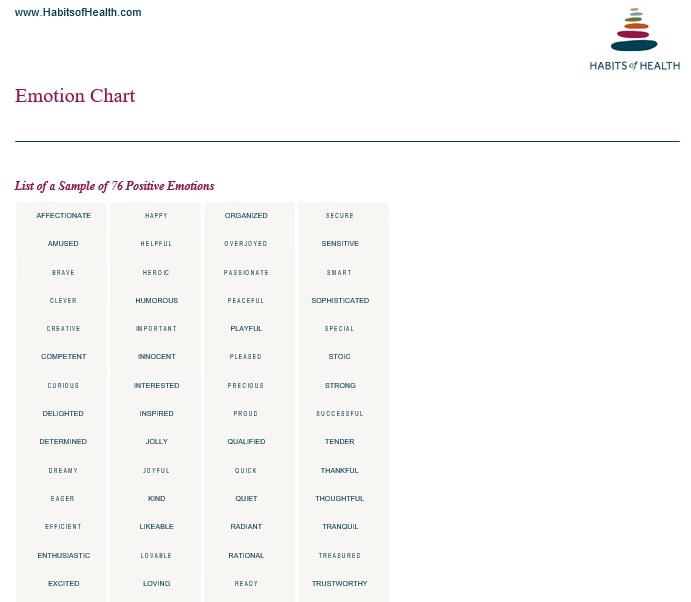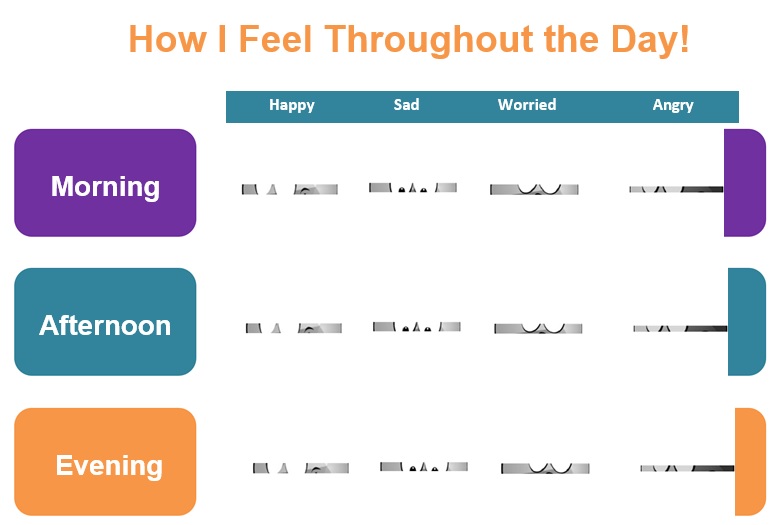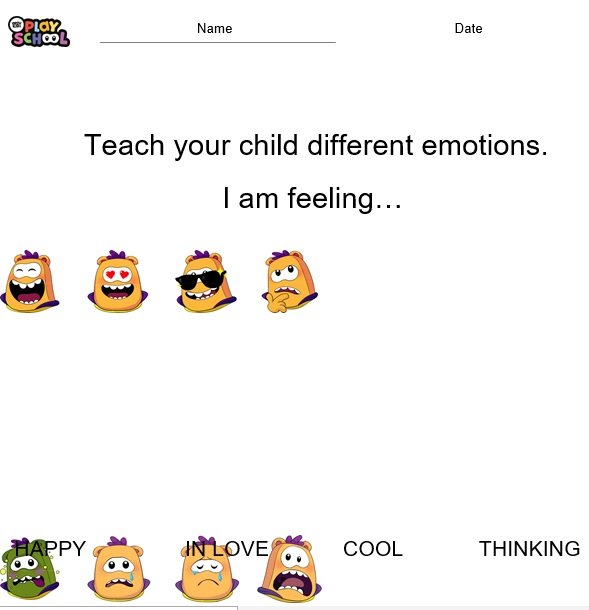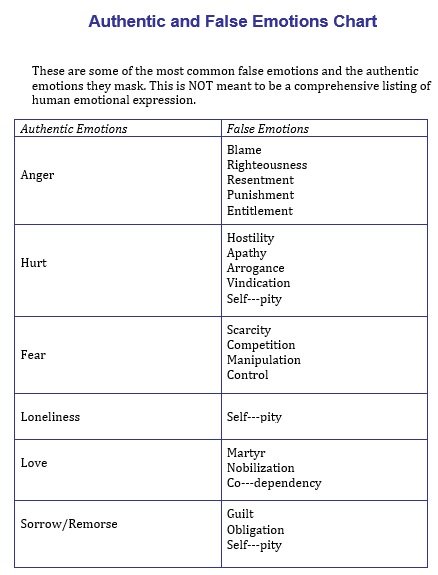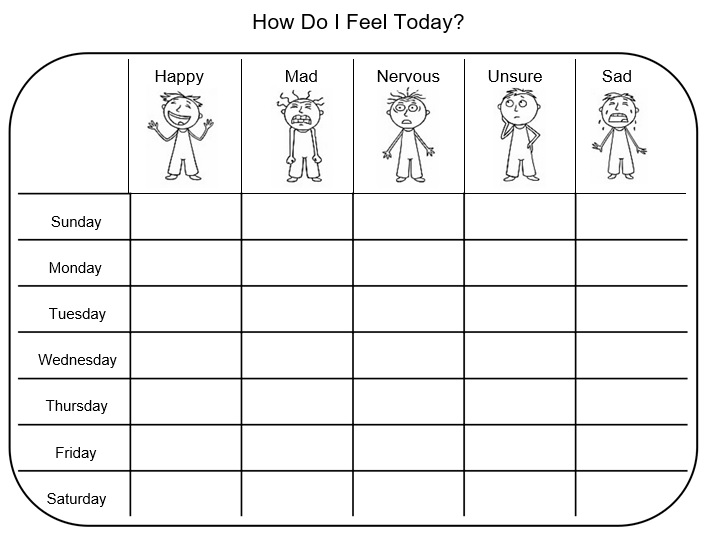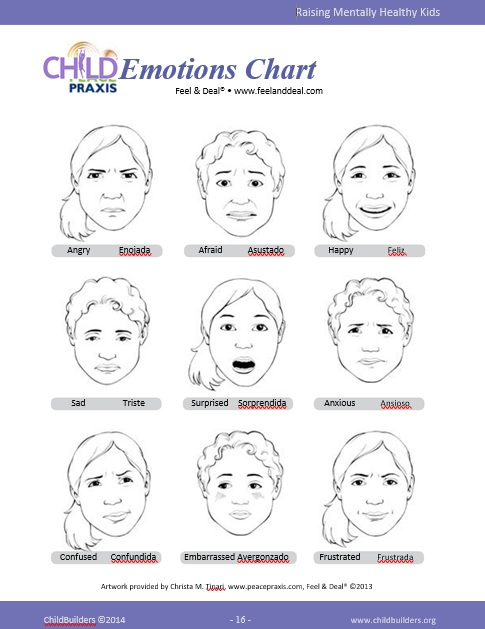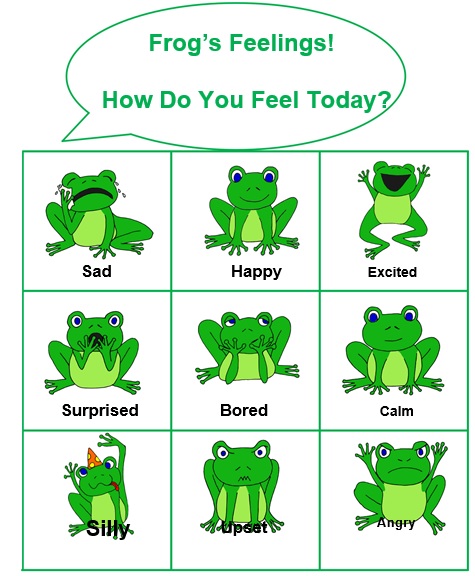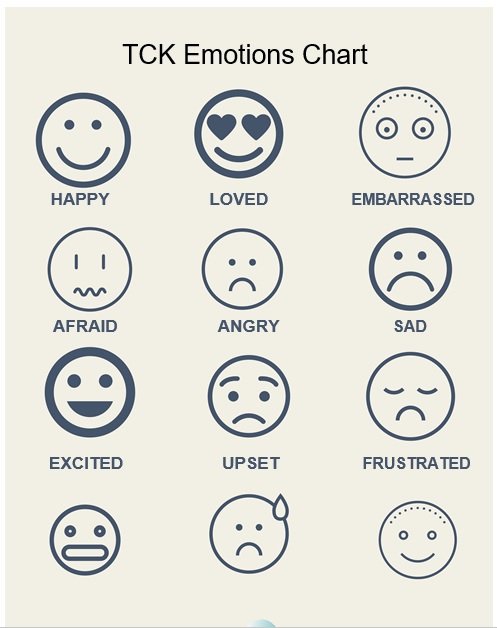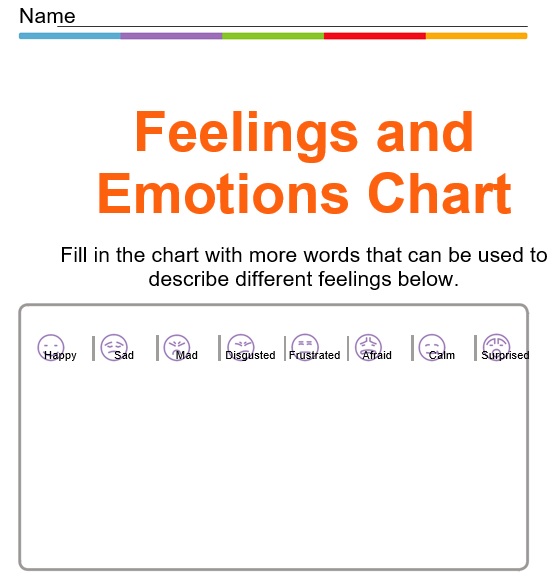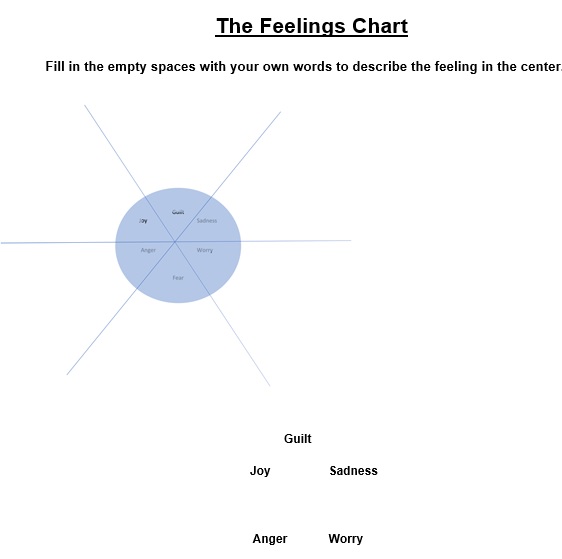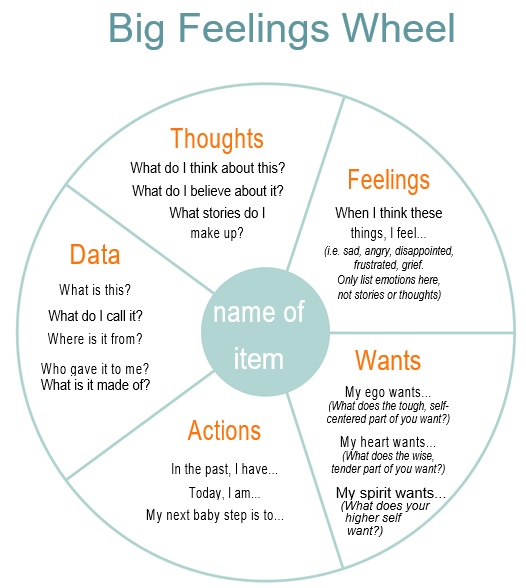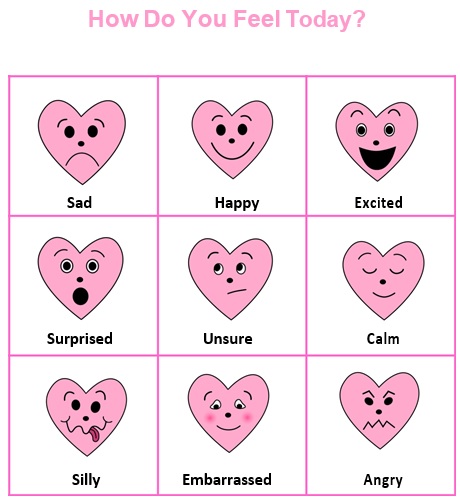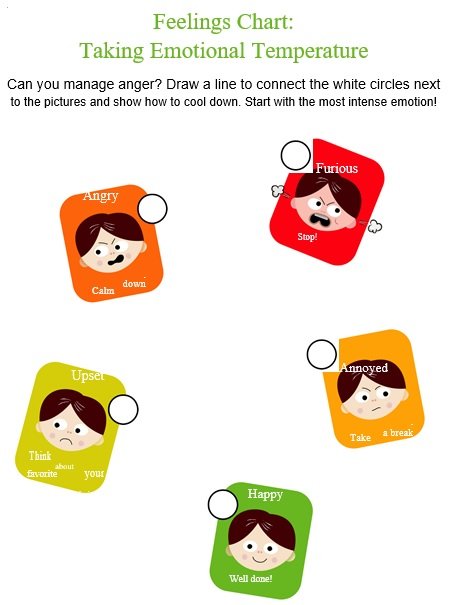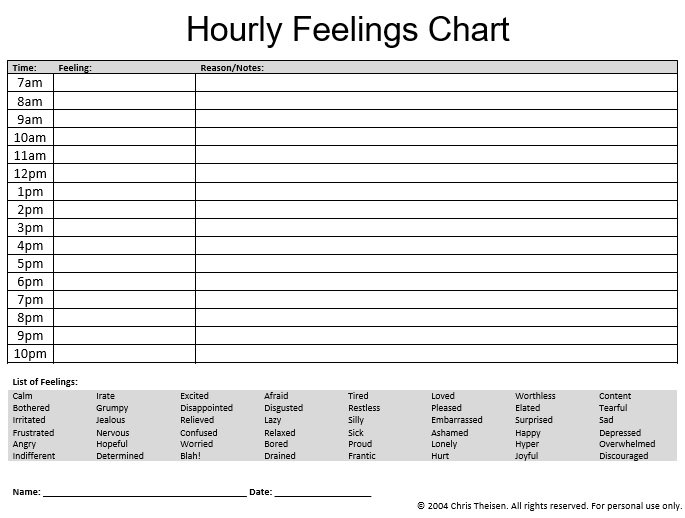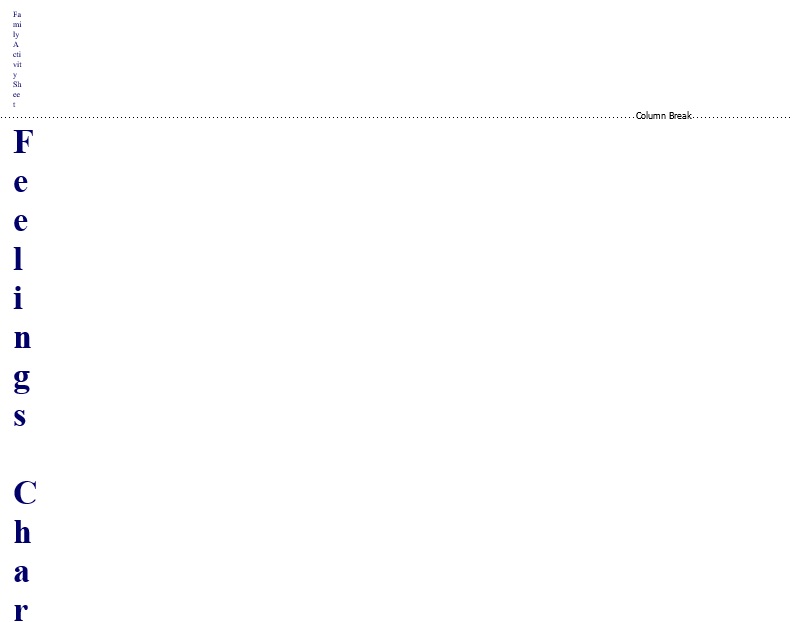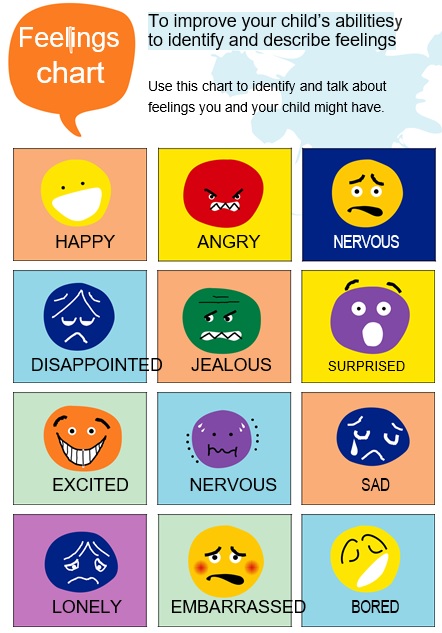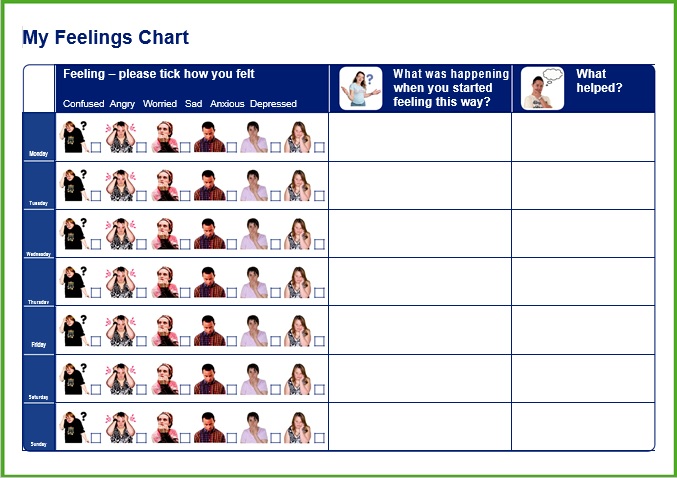Feelings chart is a document used to identify a child’s feelings. Determining the child’s feelings is important especially for children who don’t have communication skills. Their feelings can be unpredictable and it can be difficult to know how they are feeling. But, with the help of a feelings chart, you can easily know about their feelings or emotions.
Table of Contents
- 1 What is a feelings chart?
- 2 The primary feelings to include in a feelings chart:
- 3 Why do you require a feelings chart?
- 4 Reasons for using a feelings chart:
- 5 How to create a feelings chart?
- 6 How to use a feelings chart?
- 7 Some different ways to help children express their feelings:
- 8 How does a feelings chart help children in particular?
- 9 Conclusion:
What is a feelings chart?
A feelings chart is simply a chart that contains different feelings or emotions. On the basis of who the intended audience is, there are multiple different variations of this chart. The feelings chart can be helpful for preschoolers all the way up to high schoolers. All age groups can get benefit from this chart.
The primary feelings to include in a feelings chart:
Younger children feel several emotions. It is difficult to understand what they are actually feeling even with a feelings chart. The major problem is that to comprehend where their emotions come from. However, it is important to first to learn the basics in order to understand the variety of complex feelings. There are 8 primary feelings that humans are high-wired to feel;
- Anger
- Disgust
- Fear
- Happiness
- Interest
- Sadness
- Shame
- Surprise
Some other feelings may also arise, but they are from a combination of these primary ones. Robert Plutchik first introduced this theory and established the emotions or feelings wheel. This tool basically demonstrates and simplifies complex emotions. You may also like Reward Chart Templates.
Why do you require a feelings chart?
Children usually have to do struggle in expressing and identifying their feelings. Also, this is very significant skill for them to learn. This is also known as emotional intelligence. This ability is essential to manage interpersonal relationships.
For kids, a feelings chart is one of the simplest ways to start teaching this. The children get benefits from this in different ways in case they become able to share and determine their feelings. This feeling or emotion chart can also do the following aside from being able to tell you how the kid’s feel;
Build vocabulary
Simple feelings like sad, happiness, anger, and so on are introduced to children through this chart. This is the first step in building their vocabulary. It enables them to comprehend more complex feelings later.
Assist them in recognizing body language and facial expressions
For adults and children, the feelings chart has illustrations that indicate body language and facial expressions of different feelings. The expressions on the chart might be more exaggerated than what you actually see in real life. But, they still assist the children in learning.
Assist children in learning regarding feelings in a non-verbal way
It is a difficult time for children to open up and share their feelings, particularly the negative ones. You can vulnerable by telling others that you’re mad, sad or you need help. On the issue of opening up and sharing their feelings, both adults and children can struggle. Furthermore, children with special needs are generally non-verbal. It means they can’t share their feelings using words.
The children might resort to behavior when they can’t express their feelings with words and don’t know any other effective ways to share. This is because their means of communication and act out in undesirable or negative ways.
Reasons for using a feelings chart:
It is very important for children to learn how to express and identify their feelings. This is also known as emotional intelligence. Moreover, it is an essential ability to manage interpersonal relationships. A feelings chart is the best way for kids to start teaching this. This chart makes them able to share and identify their feelings. Here are some reasons for using this chart;
- Simple feelings like sad, happy, angry, and so on are introduced to children through this chart. This builds their vocabulary and enables them to comprehend more complex feelings later.
- These charts have illustrations for adults and kids that indicate body language and facial expressions of different feelings. The expressions on the chart could be more exaggerated than in real life. This will also help children in learning.
- It is challenging for children to open up and share their feelings especially negative ones. You can feel vulnerable by informing others that you’re mad, sad, or you need help. Both kids and adults do a lot of struggle on the matter of opening up and sharing their feelings. This chart is usually used for non-verbal children means they can’t share their feelings by using words.
However, when children can’t share their feelings with words or they don’t have another effective way to share it then they behave in undesirable or negative ways.
How to create a feelings chart?
In this modern era, you can use emojis to make your feelings chart. In the past, everybody used one specific image of feeling faces. But, we have a lot of emojis everywhere. You can use them to make printable feelings charts. Since a feeling chart assists in identifying what children are currently feeling or in determining what other kids are also feeling. Children can easily figure this out by having a visual chart. You just have to look at a face and identify feelings instead of just identifying them. Follow the below steps to make your own chart;
- At first, pay attention to the feelings you want to include. Use the primary feelings to keep it simple. When your child learned the basics, then go for the more complicated feelings such as frustrated, embarrassed, silly, confused, or worried. Then, take pictures of real children indicating these emotions. You can do this either by taking photos of your children or by downloading stock images of children.
- Place the pictures in the chart. Under each face, write the corresponding feelings. Place it where your child can easily access it. In this way, without asking your help, your child can look at it.
How to use a feelings chart?
Children start acting out when they have difficulty in explaining what they feel. This usually takes place with children 12 years and below. This is because they don’t have skills that are required to recognize their feelings and verbally talk about them. With a use of feelings chart, you can allow your child to communicate their feelings. This chart has a lot of feelings or emotions that your child may experience throughout the day and throughout the days of the week. By using simple materials such as markers, cardboards, crayons, and colored pencils, you can make it.
Moreover, you can draw faces on paper by hand. You can also use photos or face stickers to paste on the chart. The primary purpose of these charts is to reflect the interests and personality of children. You can also involve your child in the making process. You can also ask them what feelings they want to include.
After making the chart, hang it in your child’s room. After that, decide the proper time to review your child’s chart. It’s better to do this before bedtime because it is the best time to make bonding with your child. Don’t limit it to that time, you should ask them to place a face on the chart to describe how they feel throughout the day.
However, it depends on your child that how many faces they select whether they may select only one face during the day or may select several. The number of feelings your child will express is not an important thing. You just have to make sure that your child learns how to indicate their feelings with the right words. The role of parents over the feelings of the day is that they have to reflect their child’s feelings back to them. You should also check Chore Chart Templates.
Some different ways to help children express their feelings:
Social-emotional skills are important skills. They can help children in navigating the world around them and build connection with other people. Also, they can make life-long relationships as they grow older. But, they must first learn how to identify those feelings before they can express and deal with their feelings.
It is often helpful to use a printable feelings chart and talking about feelings. You can use different ways to do this such as through conversation, using a feelings or emotion chart, and more. Here are other ways to help children express their feelings aside from feelings chart for adults and children;
Watch the movie “Inside Out”
Most families like to watch movies at night. For home schooling, it is an excellent activity. This would be great if you can watch with your kids the Disney movie “Inside Out.” This is because it is a great example of an educational film to watch with children. Additionally, the movie also fuels creativity apart from having incredibly deep insights and thoughtful conversation.
Play with your child
Play is also concerned with childhood. It is also a language that most children love and understand. Through play, they can learn different words. You might see them replaying the scenes in their own imaginative kind of way after they watch a movie. So, by participating in their play activities, you can move things.
Learn how to determine feelings
Speak to your child about the different feelings and check how many they can think of. Then, write them down. Also, speak about the other synonyms of feelings. Read some books with your child in case you are having trouble.
Act out the different feelings
By using a mirror, children want to get amused and learn more regarding their emotional expressions. With this, when you’re sad, happy, scared, mad, and so on, they can see through their faces what it is to look like. Even, you can play charades in which you act out different feelings.
How does a feelings chart help children in particular?
A feeling chart is wonderful. We, as adults, know the difference between complex emotions, but kids can’t understand those more complex emotions. It is super important being able to determine emotions. This is because the kids are more likely to be empathetic towards others who learn how to identify and express their feelings appropriately. They develop a positive self-image and good mental health as well. On the other hand, the inability to communicate emotions is that frustration, which can lead out outbursts and meltdowns.
Furthermore, this ability to determine your emotions is particularly important. It’s really important to have children identify how they’re feeling as they are feeling so many different types of emotions. Another reason of using a feelings chart it helps with anxiety. Thus, having a feelings chart is a positive way that helps the kids in developing the skills they need to manage them effectively.
Conclusion:
In conclusion, a feelings chart is a helpful tool in order to determine the feelings of children. This chart is also the best way to teach children about how to express and identify their feelings. At first, teach them primary feelings and then move towards the more complex feelings.



